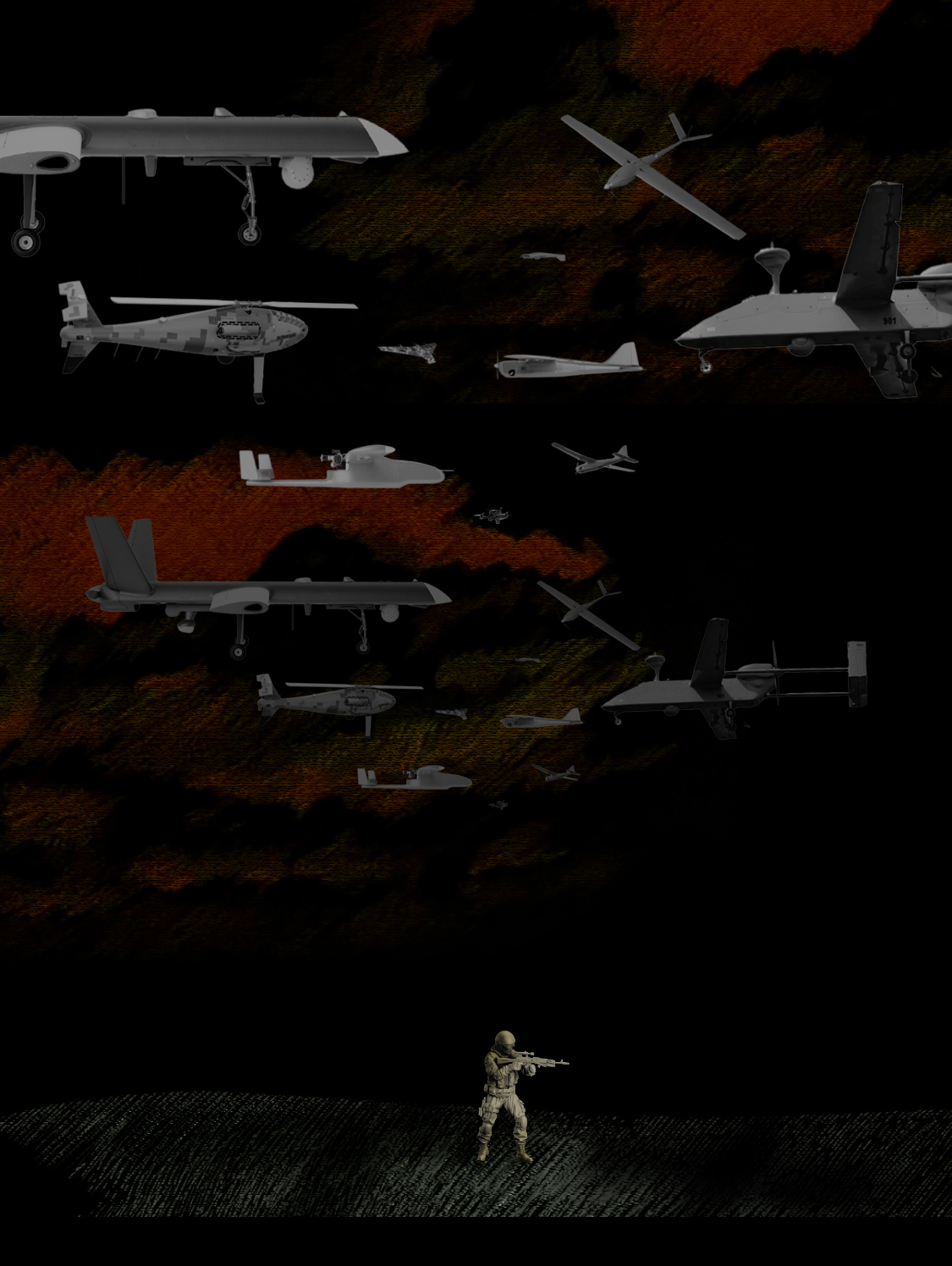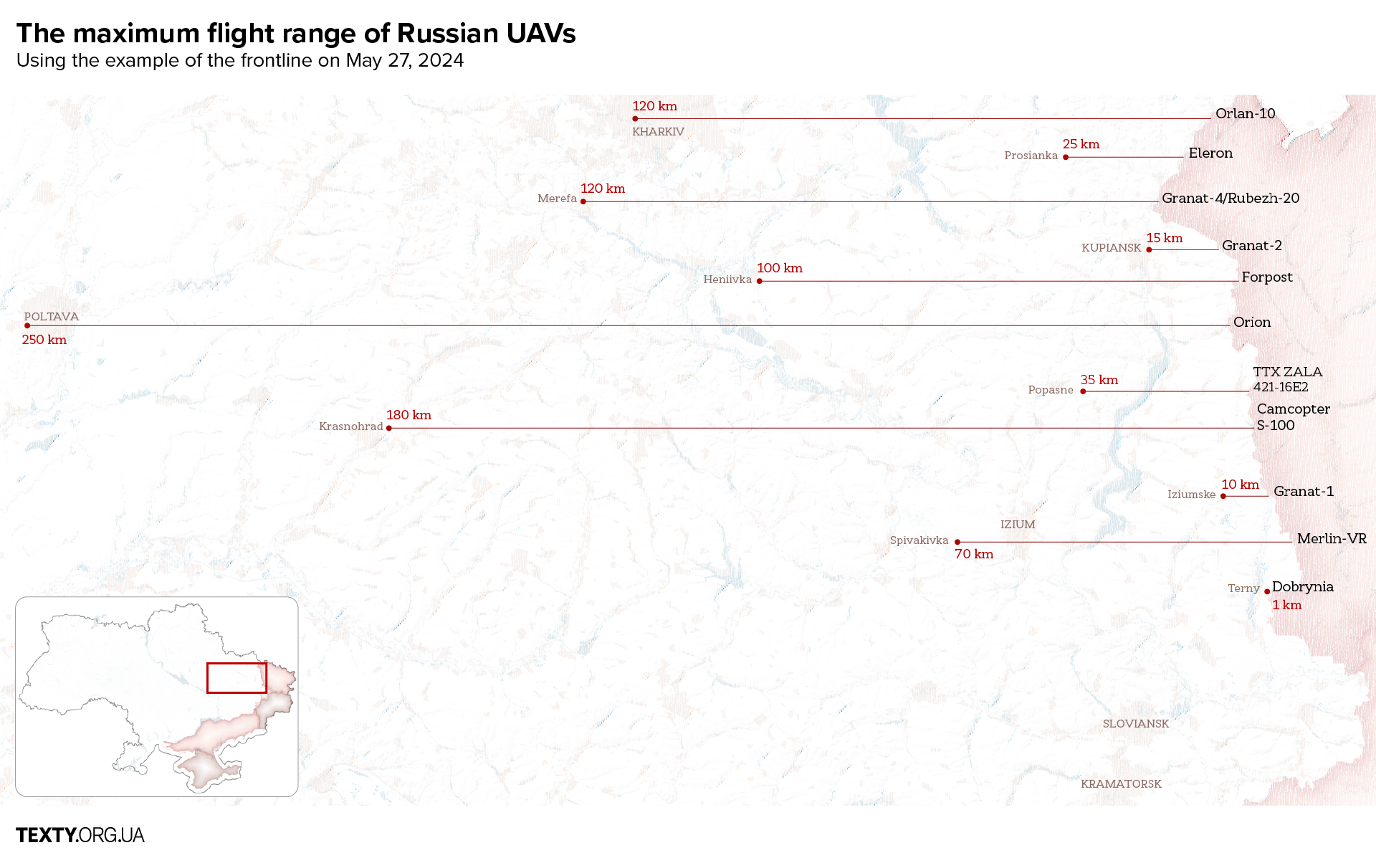The sky full of drones. Main Russian reconnaissance UAVs


The sky full of drones
Main Russian reconnaissance UAVs
According to soldiers' testimonies, Russia surpasses us in the number of reconnaissance and strike types of UAVs. This problem needs to be resolved.
According to soldiers' testimonies, Russia surpasses us in the number of reconnaissance and strike types of UAVs. This problem needs to be resolved.


Long-range reconnaissance UAVs enable the enemy to target our important weaponry. It works like this: the UAV sees and transmits information, and the Russians immediately launch an "Iskander" or "Uragan-1M" at the target.
This is how the occupiers have already destroyed several Ukrainian helicopters and a Patriot missile launcher.
Short—and medium-range reconnaissance UAVs are no less dangerous. They operate directly on the front line, helping Russian artillery fire more accurately and cause maximum losses.
Unfortunately, Ukraine cannot massively shoot down reconnaissance UAVs. Their number is too large, and our air defense capabilities are limited. There is also electronic warfare (EW), but it can only disrupt the UAV's mission: encountering interference, it turns around and flies back.
Why is it so difficult to shoot down a Russian UAV?
Invisibility. Many models, especially small reconnaissance drones, are challenging to see or hear during operation.
No thermal trail. UAVs that run on batteries leave no thermal trail, making them hard to detect with infrared systems.
Limited air defense capabilities. Not all air defense systems can reach the flight altitude of some reconnaissance UAVs.
Missile shortage. Ukraine constantly experiences a shortage of air defense missiles.
EW does not affect all aircraft. Those flying in complete radio silence, emitting nothing and taking photos along a predetermined course, are insensitive to EW.
In the graphic, "Orlan" and ZALA are highlighted in red. These UAVs are most commonly encountered on the battlefield, with an operational altitude of 1800-2000 meters. The rest may not be known to a common soldier as they are not as widespread. However, specialists studying Russian weaponry document their use.
Man-portable air-defense systems (MANPADS) are effective against the "Granat" UAV and quadcopters, but using them against such small targets is not always practical. The "Eleron" and "Merlin" rise to an altitude of 5 km but are rarely seen. The "Osa" and "Tor" air defense systems are effective against them.
"Orion" and "Forpost" can reach altitudes of up to 7 km, making them difficult to reach for most Ukrainian air defense systems. To combat them, modern air defense systems like "Kub," "Buk," and IRIS-T are needed.
There have been cases of "Orlans" being shot down by FVP drones. We hope this can be scaled up.
According to an EW specialist, the biggest threats to us are "Orlan," ZALA, Supercam (not shown in the graphic), and "Merlin." ZALA and Supercam can be used both as scouts and as fire adjusters, providing live streams from the battlefield. ZALA is also used to guide the kamikaze drone or rather, the loitering munition "Lancet" (others fly over, record the situation, and the enemy receives the information after the UAV returns).
Usually, they rise to an altitude of 2.5-3 km, as they can be hit with a machine gun from an altitude of 1.5 km. On cloudy days, they may descend to 800 meters.
"Orlan" is one of the most massive Russian reconnaissance drones. It is capable of conducting daytime and nighttime reconnaissance, as well as radio-technical reconnaissance. It is notable for being constantly upgraded with new equipment, including advanced cameras.
Attempts have also been made to use "Orlan" as a strike UAV to drop munitions, but this idea was abandoned.

